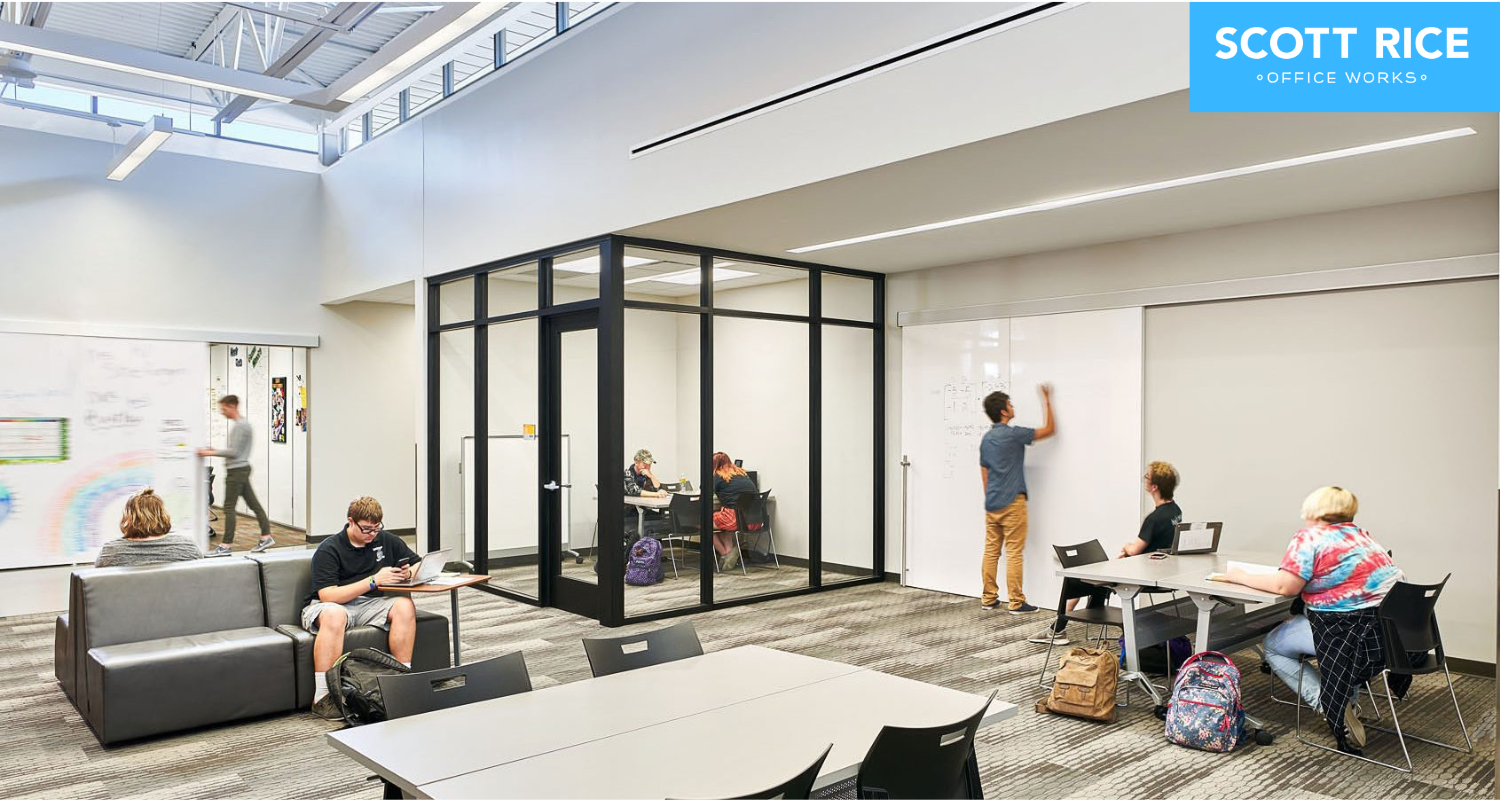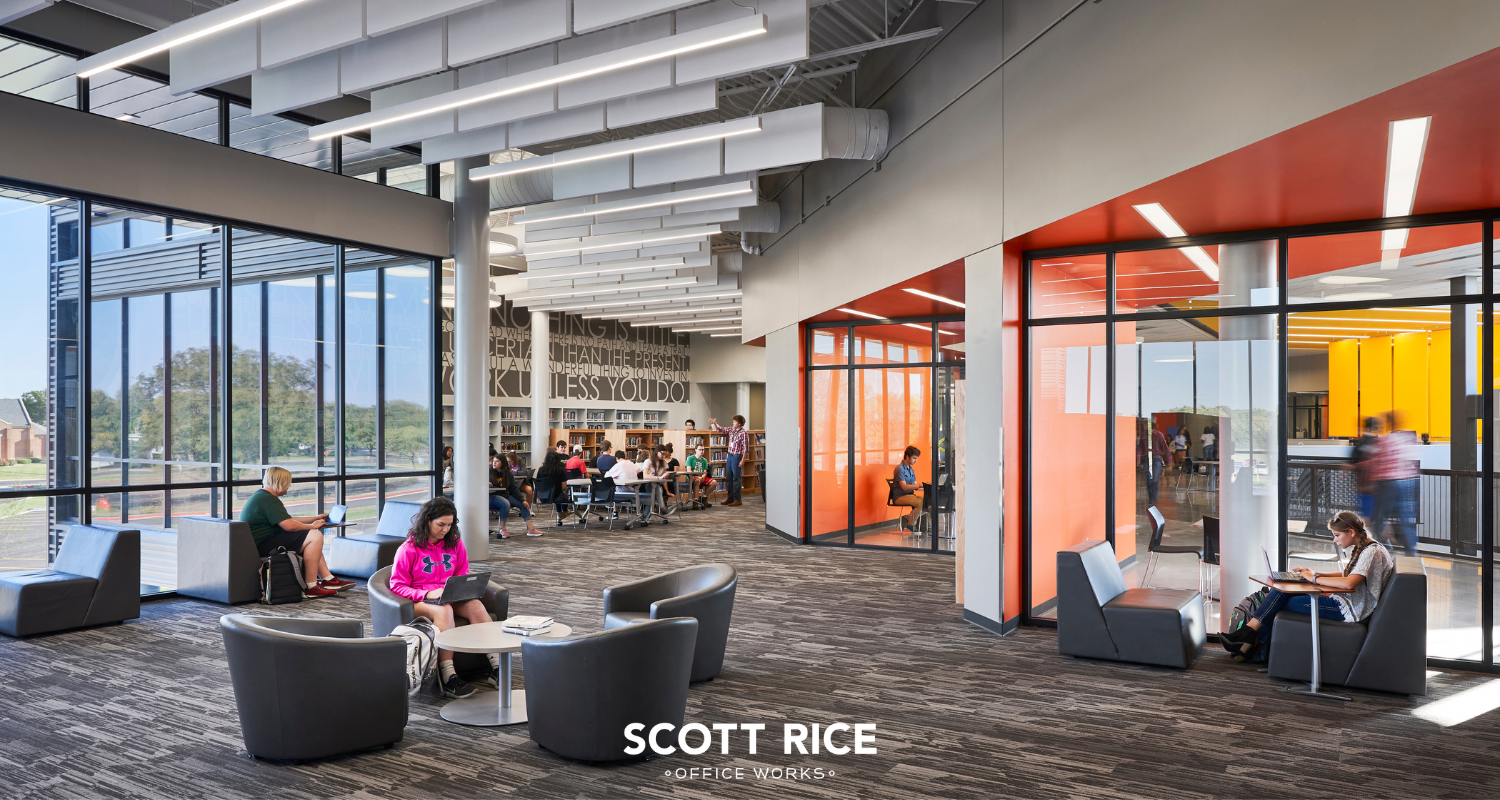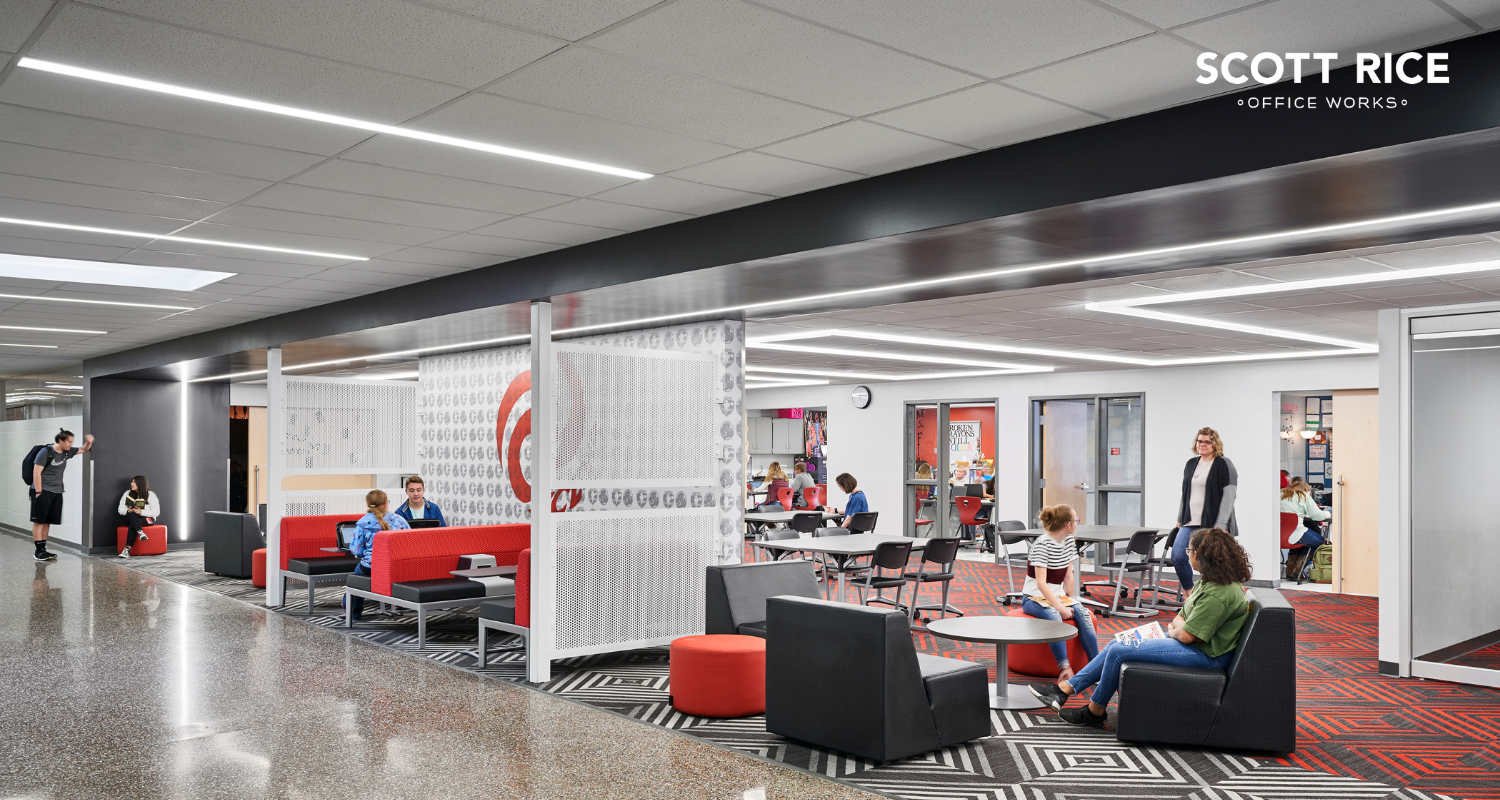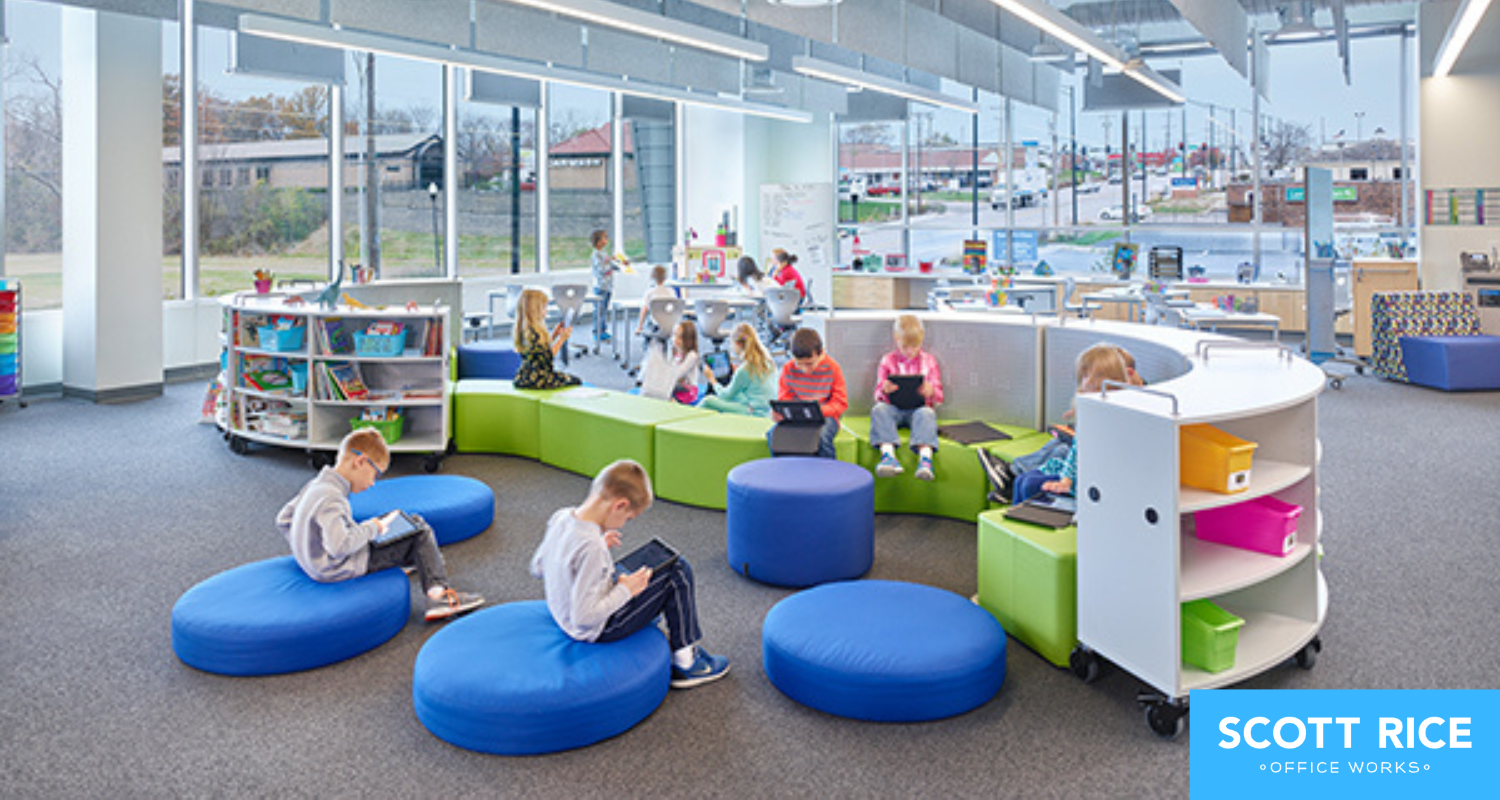By: Danelle Marsden, Ed. D, Director of Business Development
Throughout my 29-year journey as a Missouri educator, I’ve championed evidence-based practices, crafted flexible learning spaces and fostered meaningful collaborations with students, staff, parents and partners. Now, as Director of Business Development at Scott Rice Office Works, I’m taking this journey to the next level, infusing innovation and growth to create some truly amazing spaces.
Imagine having a place that encourages autonomy for teachers, staff and students – a space that ignites innovation, inspires creativity and cultivates critical thinking. I’ve had the privilege of witnessing firsthand how Scott Rice revolutionizes the educational experience. Let me share what, to me, constitutes excellent education design.
Creating Inspiring Spaces for Educators
When you’re working in a comfortable space that truly inspires you, success becomes the natural outcome. Especially for educators, where the right environment can make a world of difference in delivering engaging lessons. Here are a few design elements to consider:
-
Fabric and texture:
Think comfy chairs like Cobi by Steelcase, pleasant textures and ergonomic design. They’re not just for show – they help teachers stay at ease during long hours of instruction.
-
Height-adjustable furniture:
Adjustable desks and chairs ensure that each educator can customize their workspace and avoid discomfort caused by ill-fitting furniture.
-
Easy access to teaching resources:
Teachers often need quick access to educational materials, teaching aids and technology. When these resources are readily available and well-organized, educators can seamlessly integrate them into their lessons.
-
Adaptable and flexible layouts:
An adaptable space gives teachers the freedom to swiftly transform their environment to cater to diverse learning needs. Whether they’re orchestrating group projects, fostering collaborative workspaces or igniting interactive activities, a flexible layout becomes a canvas for possibilities.
Customizing Design to Fit Specific Spaces
It’s important to tailor design to match what the space is all about. Some key areas where a personalized touch really makes a big impact include:
-
Main office area:
The aim here is to create a warm and inviting atmosphere. It’s a place where parents might need to wait for a meeting with a teacher, so consider adding a cozy waiting area, alongside more practical spaces for disciplinary matters.
-
Teacher’s lounge:
This space should radiate warmth and offer a relaxing environment where teachers can unwind after a tough day. It’s essential to provide comfortable seating options, such as the Campfire Collection to draw people together in open spaces. You might also want a comfy couch or a stool where a teacher can sit down to catch their breath or work independently.
-
Standard classrooms:
Versatile furniture is essential in the modern classroom. Traditional desks still have their place for personal work, but you can also mix square, rectangular, circular and irregular tables to support different learning styles and ensure design reconfiguration.
-
Cafeterias:
Forget long tables and little stools.This space can benefit from alternative seating options.Consider round tables or couches that face each other to foster communication.
-
Science labs:
You don’t want furniture that’s easily movable in a space where you might be dissecting an octopus. What you need is stability to prevent accidents and non-movable storage solutions that securely house equipment during experiments.
Embracing Student-Centered Learning Environments
Remote learning during the pandemic granted students the freedom to choose their study space. Yet, traditional classrooms cling to a dated 1950s model characterized by stagnant rows of desks. In today’s educational landscape, tech-savvy students thrive when they are actively engaged and have access to exciting modular seating options. Consider these other design elements for a 21st-century learning experience:
-
Comfortable seating:
Gone are the days of hard, unforgiving plastic chairs. After all, if young learners are uncomfortable, it’s hard for them to pay attention. Offer seating options that support backs and embrace the body’s contours to accommodate different postures, whether it’s leaning back for thinking time or sitting upright at a computer. For individual work, the Brody WorkLounge creates a shelter from visual distractions and its adjustable worksurface ensures technology is at eye level, minimizing strain on the neck and shoulders.
-
Versatile tables:
Consider tables that are small and easy to move around, particularly those with diverse shapes like puzzle tables. Having different shapes is important because you can lose interaction if you only have square or rectangular tables. In group settings, aim for furniture that seats five kids, as having two kids across from each other can limit interaction to just that pair.
-
Movable furniture:
In most spaces, you want furniture that’s easily movable, such as caster chairs or chairs that have a wobbling feature. Allowing students to move within their environment with furniture like the Turnstone Buoy helps keep their engagement alive without the distraction of an overpowering urge to get up and move around.
-
Soft seating:
Comfortable seating is key for collaboration. In elementary settings, look for stools that kids can sit on and use carpets for group activities. In high school, an option is to use large blocks of carpet where students have the choice to comfortably sit on the floor.
-
Height variety:
Diversity in seating and table height is valuable because it gives students a different perspective on learning when changing up their norm.
-
Technology:
With mobile devices, students can learn from virtually anywhere. That’s where Steelcase Flex Media Carts comes in, equipped with a monitor and a designated area for teaching supplies. These mobile carts are incredibly flexible and can be easily moved around the classroom. Similarly, the Flex Mobile enables collaboration boards to travel seamlessly from one room to another.
Designing Inclusive Learning Environments
When it comes to classroom ambiance, striking the right balance is key. Students have varying learning styles, whether they are visual, kinesthetic or auditory learners, and it’s crucial to engage all three. Educators must also consider students with special needs and provide sensory options. For example, a GrassyOTT allows kids to lay on a structure that mimics grass. They can sit on it or rub it while working or listening to presentations. The unique texture provides them with additional sensory input that helps them focus and engage. It comes down to accommodating those who need to wiggle or who seek certain textures. By addressing their sensory needs, students stay engaged and focused on their learning.
Spark Creativity and Success with Scott Rice Furniture
Crafting the ideal educational environment isn’t a one-size-fits-all endeavor; it’s about creating spaces that nurture innovation and creativity, empowering educators to collaborate seamlessly with their colleagues. That’s where Scott Rice Furniture comes in. If you’re eager to transform your educational spaces into vibrant hubs of learning, it’s time to make the move and modernize. Contact us today and discover how our design solutions can make a real difference!





